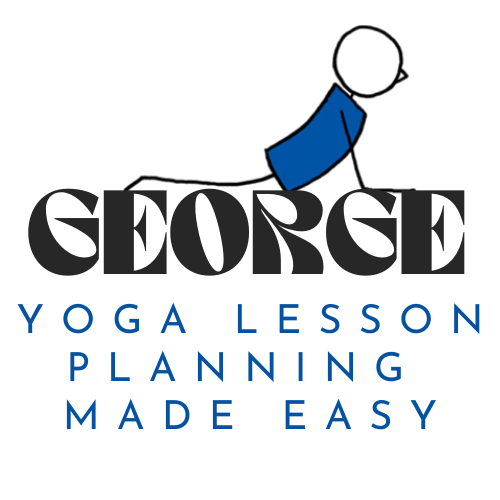Free Kundalini Yoga Lesson Plan
Free Downloads
Short Lesson Plan
Kundalini Yoga Lesson Plan: A Journey To Physical Vitality And Increased Consciousness (short plan)
Each yoga lesson plan you create within the Yoga Genie Lesson Planner comes with a short version of the lesson plan. The short version is perfect for taking into class with you. It’s short and sweet.
Long Lesson Plan
Kundalini Yoga Lesson Plan: A Journey To Physical Vitality And Increased Consciousness (long plan)
Each yoga lesson plan you create within the Yoga Genie Lesson Planner comes with a long version of the lesson plan. The long version has everything you need to practice the lesson plan before getting to class. You can take it to class with you (but you may prefer to take the short version). The long version is a great handout to give to your students, especially your one-to-one students. It immediately shows your professionalism, and increases your expertise in the eyes of your students.
Stream Lesson Plan
Kundalini Yoga Lesson Plan: A Journey To Physical Vitality And Increased Consciousness (stream plan)
Each yoga lesson plan you create within the Yoga Genie Lesson Planner comes with a video stream version of the lesson plan. You’ll be able to provide the streams to students as a URL, so they can practice from home.
Kundalini Yoga Poses
The Kundalini yoga poses in this Kundalini yoga lesson plan include: Anjal Crown Chakra Pose, Body Drops Pose, Jnana Energy Focus Pose, Lotus Arm Stretches Pose, Neck Rolls Pose, Ong Namo Guru Dev Namo Pose, Sat Num 3rd Eye Pose, Sat Num Heart Chakra Pose, See Saw Breath Pose, Shoulder Gyan Twists Pose, Shoulder Twists Pose, and Spinal Flex Pose.
Kundalini Yoga FAQs
Whenever I teach a yoga class with a theme (e.g. Kundalini yoga), I like to imagine the client will ask me a bunch of questions.
So, I study up on the subject, and make notes in FAQ format (see below).
Once I’ve completed my FAQs, I read one, close my eyes and answer it the best I can. I open my eyes to see how much detail I got right. If I missed anything, I repeat the process until I get it right.
This gives me huge confidence when giving a one to one session. There’s nothing like diligent preparation to give you confidence when going into a one-to-one session with a client. Though, I always tell my clients that I’m not a doctor, and if they have any concerns they should consult their doctor.
Below are the Kundalini Yoga FAQs….
What is Kundalini Yoga?
Kundalini Yoga is an uplifting blend of spiritual and physical practices, Kundalini Yoga incorporates movement, dynamic breathing techniques, meditation, and the chanting of mantras, such as Sat Nam, meaning “truth is my identity.” The goal is to build physical vitality and increase consciousness.
Where’s the Kundalini name derived from?
It derives its name through a focus on awakening kundalini energy through regular practice of meditation, pranayama, chanting mantra and yoga asana. Called by practitioners “the yoga of awareness”, it aims “to cultivate the creative spiritual potential of a human to uphold values, speak truth, and focus on the compassion and consciousness needed to serve and heal others.”
What is the coiled-up serpent?
Kundalini is the term for: a spiritual energy or life force located at the base of the spine, conceptualised as a coiled-up serpent. The practice of Kundalini yoga is supposed to arouse the sleeping Kundalini Shakti from its coiled base through the 6 chakras, and penetrate the 7th chakra, or crown. This energy is said to travel along the ida (left), pingala (right) and central, or sushumna nadi – the main channels of pranic energy in the body.
What is the golden cord?
Kundalini energy is technically explained as being sparked during yogic breathing when prana and apana blends at the 3rd chakra (navel centre) at which point it initially drops down to the 1st and 2nd chakras before traveling up to the spine to the higher centres of the brain to activate the golden cord – the connection between the pituitary and pineal glands – and penetrate the 7 chakras.
What is the tri-fold approach?
Borrowing and integrating the highest forms from many different approaches, Kundalini Yoga can be understood as a tri-fold approach of Bhakti yoga for devotion, Shakti yoga for power, and Raja yoga for mental power and control. Its purpose through the daily practice of kriyas and meditation in sadhana are described a practical technology of human consciousness for humans to achieve their total creative potential. With the practice of Kundalini Yoga one is thought able to liberate oneself from one’s Karma and to realise one’s Dharma (Life Purpose).
What do a majority of Kundalini poses focus on?
The practice of kriyas and meditations in Kundalini Yoga are designed to raise complete body awareness to prepare the body, nervous system, and mind to handle the energy of Kundalini rising. The majority of the physical postures focus on navel activity, activity of the spine, and selective pressurisation of body points and meridians. Breath work and the application of bandhas (3 yogic locks) aid to release, direct and control the flow of Kundalini energy from the lower centres to the higher energetic centres.






